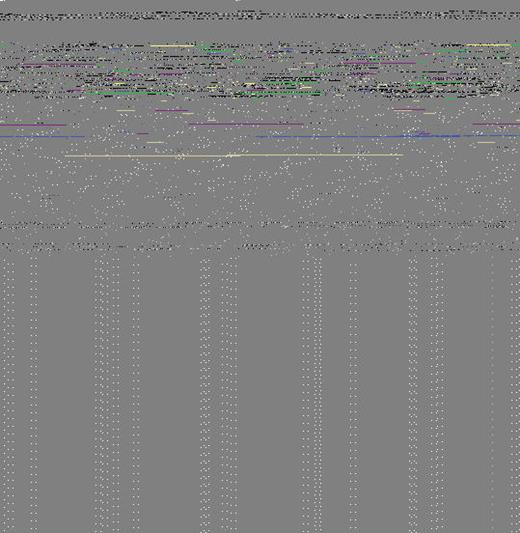Abstract
Fusion oncogenes (FGs) resulted due to chromosomal abnormalities are directly responsible for leukemogenesis in pediatric B-cell acute lymphoblastic leukemia (ALL) 1. The most common FGs in pediatric B-cell ALL are BCR-ABL, MLL-AF4, ETV6-RUNX11 and TCF3-PBX1, which have implication in prognostic stratification and form the basis for selection of 3-, 4- or 5 drug based remission induction regimen 1, 2. Genetic Testing for FGs also help determine the option for tyrosine kinase inhibitors for BCR-ABL+ subtypes in consolidation phase 3. Moreover, the frequencies of these clinically important genetics subtypes may not be uniform in different parts of the world because of the racial, ethnic and environmental variations 2. It shows that studies on fusion oncogenes become very important for clinical management and health policy making for pediatric B-cell ALL in a given area. Therefore, objective of this study was to find frequencies of the most common FGs and their association with clinical pattern.
FGs were studied in 188 pediatric B-cell ALL patients using RT-PCR2at diagnosis and results confirmed using interphase-F.I.S.H. Data was analyzed using SPSS version 17 to find out association of FGs with clinical characteristics and treatment outcome.
Overall, FGs were detected in 87.2% (164/188) of the patients .Overall survival was around 140 weeks (Mean survival: 70.9 weeks (95% CI: 60.3-81.6) and median survival was 40 weeks (95% CI: 20.1-59.9). Our 3-years overall survival was 31.9% (60/188) and 3-year relapse free survival was 18.1% (34/188) while 4 patients (2.12%) died of treatment-related toxicities (Figures 1-3).
Patients with ETV6-RUNX1 (36/188, 19.14%) had significantly better survival than patients with other FGs (Mean: 110.9 weeks, 95% CI: 92.7-129.1) (p=0.030). TCF3-PBX1 (2.1%, 4/188) was associated with an inferior outcome and a higher risk of CNS relapse. MLL-AF4 (34/188, 18.1%) was predominant in age group 8-15 years (p=0.001), with frequent organomegaly, low platelet count and poor survival (Figures 1-3).
Interestingly, frequency of BCR-ABL was found to be 47. 9% (90/188, Figure 1) (Figures 1-3). Frequency of occurrence was directly proportional to age (6 less than 2 year age group, 32 in the 2–7 year age group & 52 in the 7-15 year age group). BCR-ABL positive patients had significantly lower remission rates, shorter survival (43. 73 ± 4. 24 weeks) (Figure 1) and higher white cell count as compared to other FGs except MLL-AF4.
Our study revealed the highest reported frequency of BCR-ABL FO in pediatric ALL, in consistent with various other reports from Pakistan 2, 4, 5 & rest of the world 6, which, consequently, was associated with poor overall survival. This identifies an immediate need for BCR-ABL testing at all cancer centers and children hospitals, incorporation of imatinib in pediatric ALL treatment protocols as well as immediate start of clinical trials of tyrosine kinase inhibitors like dasatinib, nilotinib and ponatinib in for very high number of high risk BCR-ABL+ pediatric ALL in our population 2, 3, 7. Facilities for the stem cell transplantation, which are currently very rare, are needed to be developed at all pediatric leukemia treatment centers. We are urge international research community to develop research collaboration and provide training to our scientists and junior physicians interested in pediatric oncology to better understand the reasons for high BCR-ABL frequency and to betters manage morbidities and mortalities associated with this fatal type of pediatric B-cell ALL.
References:
1. Martinez-Mancilla M, Rodriguez-Aguirre I, Tejocote-Romero I, et al. J Pediatr Hematol Oncol. 2013 Apr;35(3):170-3.
2. Awan T, Iqbal Z, Aleem A, et al. Asian Pac J Cancer Prev. 2012;13(11):5469-75.
3. Hunger SP. Hematology Am Soc Hematol Educ Program. 2011;2011:361-5.
4. Iqbal Z, Iqbal M, Akhter T. J Pediatr Hematol Oncol. 2007 Aug;29(8):585.
5. Faiz M, Qureshi AM, Qazi I. IJAVMS. 2011; 5(5): 497-507.
6. Siddiqui R, Nancy N, Naing WP, et al. Cancer Genet Cytogenet. 2010 Jul 15;200(2):149-53. 7: Gao C, Zhao XX, Li WJ, et al. Am J Hematol. 2012 Nov;87(11):1022-7.
Relative frequencies & clinical characteristic different oncogene types of pediatric ALL patients
 |
 |
Saglio:Novartis: Consultancy, Honoraria; Bristol Myers Squibb: Consultancy, Honoraria; Ariad: Consultancy, Honoraria; Celgene: Consultancy, Honoraria.
Author notes
Asterisk with author names denotes non-ASH members.



